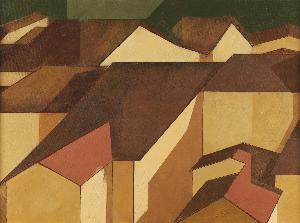Carlos Scliar
Carlos Scliar
Place: Santa Maria
Born: 1920
Death: 2001
Biography:
Carlos Scliar is a painter, engraver, illustrator, set designer, writer and graphic designer born in Santa Maria, Rio Grande do Sul, Brazil in 1920. He began his art training taking classes with Austrian painter Gustav Epstein in 1934. In 1939 he travels to São Paulo and begins his studies at the Liceu de Artes e Ofícios de São Paulo. In 1941 he moves to Rio de Janeiro and begins his studies at the Escola Nacional de Belas Artes. In 1943 he begins his professional career as an illustrator for the newspaper Folha da Manhã. In 1945 he becomes a member of the Grupo Frente, a group of artists and intellectuals who sought to break with the academic tradition of Brazilian art. In 1946 he travels to Paris and studies at the École nationale supérieure des beaux-arts. In 1948 he returns to Brazil and begins to teach at the Escola Nacional de Belas Artes. In 1950 he becomes a member of the Grupo Santa Helena, a group of artists and intellectuals who sought to promote modern art in Brazil. In 1951 he travels to New York and studies at the Art Students League. In 1952 he returns to Brazil and begins to work as a set designer for the theater. In 1953 he becomes a member of the Grupo Mural, a group of artists and intellectuals who sought to promote mural painting in Brazil. In 1954 he begins to work as a writer and illustrator for the magazine Senhor. In 1955 he becomes a member of the Grupo Opinião, a group of artists and intellectuals who sought to promote political art in Brazil. In 1956 he begins to work as a set designer for the cinema. In 1957 he becomes a member of the Grupo Frente, a group of artists and intellectuals who sought to promote abstract art in Brazil. In 1958 he begins to work as a graphic designer. In 1959 he becomes a member of the Grupo Neoconcreto, a group of artists and intellectuals who sought to promote concrete art in Brazil. In 1960 he begins to work as a writer and illustrator for the magazine Manchete. In 1961 he becomes a member of the Grupo Tendência, a group of artists and intellectuals who sought to promote conceptual art in Brazil. In 1962 he begins to work as a set designer for the television. In 1963 he becomes a member of the Grupo Nucleo, a group of artists and intellectuals who sought to promote experimental art in Brazil. In 1964 he begins to work as a writer and illustrator for the magazine O Pasquim. In 1965 he begins to work as a set designer for the ballet. In 1966 he becomes a member of the Grupo Pão e Circo, a group of artists and intellectuals who sought to promote popular art in Brazil. In 1967 he begins to work as a writer and illustrator for the magazine Jornal do Brasil. In 1968 he becomes a member of the Grupo Arte e Tecnologia, a group of artists and intellectuals who sought to promote technological art in Brazil. In 1969 he begins to work as a set designer for the opera. In 1970 he becomes a member of the Grupo Arte e Cultura, a group of artists and intellectuals who sought to promote cultural art in Brazil. In 1971 he begins to work as a writer and illustrator for the magazine Veja. In 1972 he becomes a member of the Grupo Arte e Pensamento, a group of artists and intellectuals who sought to promote philosophical art in Brazil. In 1973 he begins to work as a set designer for the circus. In 1974 he becomes a member of the Grupo Arte e Vida, a group of artists and intellectuals who sought to promote life art in Brazil. In 1975 he begins to work as a writer and illustrator for the magazine Isto É. In 1976 he becomes a member of the Grupo Arte e Sociedade, a group of artists and intellectuals who sought to promote social art in Brazil. In 1977 he begins to work as a set designer for the musical. In 1978 he becomes a member of the Grupo Arte e História, a group of artists and intellectuals who sought to promote historical art in Brazil. In 1979 he begins to work as a writer and illustrator for the magazine CartaCapital. In 1980 he becomes a member of the Grupo Arte e Memória, a group of artists and intellectuals who sought to promote memorial art in Brazil. In 1981 he begins to work as a set designer for the opera. In 1982 he becomes a member of the Grupo Arte e Paisagem, a group of artists and intellectuals who sought to promote landscape art in Brazil. In 1983 he begins to work as a writer and illustrator for the magazine Superinteressante. In 1984 he becomes a member of the Grupo Arte e Cidade, a group of artists and intellectuals who sought to promote urban art in Brazil. In 1985 he begins to work as a set designer for the theater. In 1986 he becomes a member of the Grupo Arte e Natureza, a group of artists and intellectuals who sought to promote natural art in Brazil. In 1987 he begins to work as a writer and illustrator for the magazine Época


